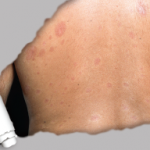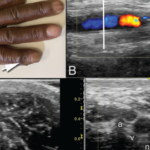Based on research showing improved signs and symptoms of systemic sclerosis in patients taking cilnidipine vs. placebo, the FDA granted orphan drug designation for the agent.


Based on research showing improved signs and symptoms of systemic sclerosis in patients taking cilnidipine vs. placebo, the FDA granted orphan drug designation for the agent.
Autologous hematopoietic stem cell transplantation (AHSCT) may improve the survival rate of patients with diffuse cutaneous systemic sclerosis (SSc), according to Georges et al. The single-arm clinical trial demonstrated the effectiveness of AHSCT and maintenance therapy. Researchers also identified potential risk factor of AHSCT in patients with low eGFR before transplantation.

Pulmonary hypertension and Raynaud’s phenomenon are just some of the symptoms patients with systemic sclerosis (SSc) may experience. Here are insights into the diagnosis and management of SSc.

Experts provided insights into how precision medicine is being used to address the needs and care of patients with systemic sclerosis.

Fractures in Patients with SSc By Zsuzsanna McMahan, MD, MHS Why was this study done? To minimize disability due to systemic sclerosis (SSc), it’s important to prevent and manage complications. Many SSc complications and related medications may increase the risk for osteoporosis and fracture. We sought to identify modifiable risk factors for fracture in patients…

No one-size-fits-all approach exists for the care and treatment of patients with systemic sclerosis (SSc) and SSc with pulmonary involvement. Here, experts discuss some best clinical practices for these patients.

McMahan et al. examined how abnormal gastrointestinal (GI) transit may contribute to GI severity and symptoms in patients with systemic sclerosis (SSc). About 90% of people with SSc have GI tract involvement, and understanding the connection between GI symptoms, their severity and abnormal GI transit may permit targeted therapeutic approaches for these patients.

Treatment with tocilizimab preserved lung function in patients with systemic sclerosis (SSc) and interstitial lung disease (ILD) regardless of a patient’s level of lung involvement, according to a recent study.
Marilynn Larkin |
NEW YORK (Reuters Health)—Rituximab seemed to be a safe and effective treatment for systemic sclerosis (SSc) in a placebo-controlled validation trial in Japan.1 “A number of studies have examined B-cell depletion therapy for systemic sclerosis, and many of them have suggested that [this] is effective in treating systemic sclerosis,” Ayumi Yoshizaki, MD, tells Reuters Health…

Devin M. Driscoll, MD, Andreea M. Bujor, MD, PhD, & Eugene Y. Kissin, MD, Rhmsus |
A 51-year-old man with a history of limited systemic sclerosis with Raynaud’s phenomenon and pulmonary hypertension being treated with tadalafil and macitentan presented to a clinic with ulceration of his right pinkie. The patient had injured the finger two months earlier. He reported poor healing and the presence of a persistent ulcer since the injury….